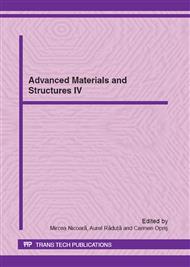p.82
p.87
p.93
p.98
p.102
p.109
p.114
p.118
p.124
Characterization of Electron Beam Irradiated Polyvinylpyrrolidone-Dextran (PVP/DEX) Blends
Abstract:
In the past years an increased interest to create new polymeric blends with application in the medical area for development of new types of biomaterials has appeared. Electron beam irradiation is well known as a method of producing important changes in polymer structure, being an alternative to chemical synthesis of biomaterials based on polymeric materials. The aim of the present study was to investigate the behaviour of some polyvinylpyrrolidone-dextran (PVP/DEX) blends under electron beam irradiation. Aqueous solutions of PVP with molecular weights of 360 000 Da (PVP 360), 40 000 Da (PVP 40), and DEX with molecular weight of 500 000 Da (DEX), were mixed as to obtain 50:50 blends of PVP40/DEX and PVP360/DEX. The obtained blends were irradiated with electron beam at different radiation doses and after irradiation treatment were processed by freeze-drying. PVP/DEX blends were characterized by infrared spectroscopy (FT-IR) and thermal analysis. The analyses were conducted in order to establish the relation between radiation dose and changes of structural and thermal properties.
Info:
Periodical:
Pages:
102-108
Citation:
Online since:
May 2012
Keywords:
Price:
Сopyright:
© 2012 Trans Tech Publications Ltd. All Rights Reserved
Share:
Citation:


